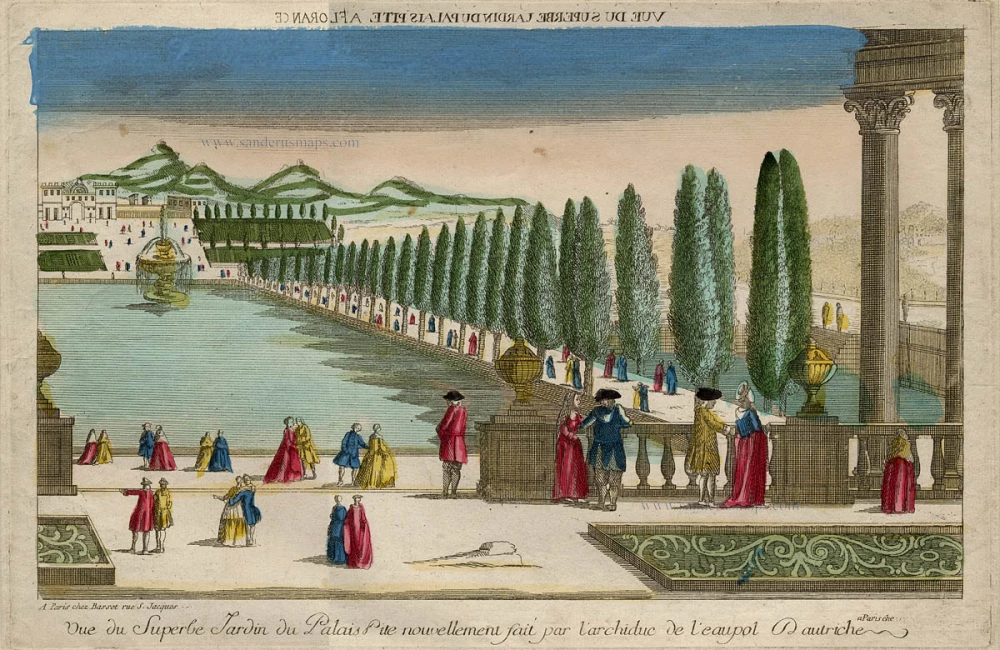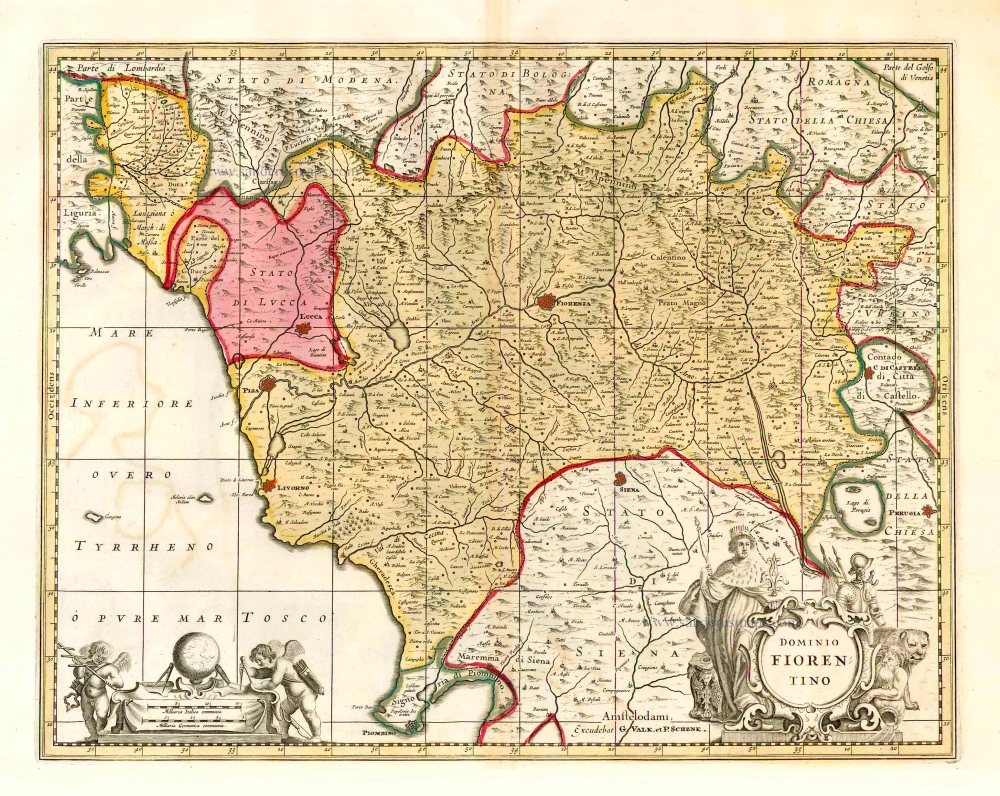Florence by Daumont (Paris) c. 1750
Optical View (French: Vue d'optique)
An optical view is a type of 18th-century hand-coloured engraved print to be viewed through a special optical device. It depicts architectural, city, or landscape scenes and is designed to give a strong illusion of depth and perspective when seen through a magnifying lens or viewing box. Characteristic of an optical view is the reversed inscription: The titles or captions were often printed backwards, because the viewing device used a mirror that would flip the image right-side up again. The artists enhanced depth with bold converging lines and bright colours. The optical views were used for popular entertainment and education, a way for people to "travel" visually. They originated in France and England around the 1740s and became fashionable across Europe. They were often sold by travelling print sellers or displayed in fairs and parlours.
Jean?François Daumont (florished 1740-1775)
Jean?François Daumont was a Paris-based print publisher and seller, active during the second half of the 18th century. While little is known about his personal life, he is primarily recognised for publishing optical prints (known in French as vues d'optique) — a popular form of visual entertainment in the 18th century.
Vue d'Optique Representant: Major Curia de Arno, Florentiae - La Grande Place de Arno à Florence
Item Number: 5902 Authenticity Guarantee
Category: Antique maps > Europe > Italy - Cities
Florence by Daumont (Paris).
Title: Vue d'Optique Representant: Major Curia de Arno, Florentiae - La Grande Place de Arno à Florence
A Paris chez Daumont rue St. Martin.
Date: c. 1750.
Copper engraving, printed on paper.
Image size: 300 x 440mm (11¾ x 17¼ inches).
Sheet size: 325 x 475mm (12¾ x 18¾ inches).
Verso: Blank.
Condition: Original coloured, excellent.
Condition Rating: A+.
Separate publication.
Optical View (French: Vue d'optique)
An optical view is a type of 18th-century hand-coloured engraved print to be viewed through a special optical device. It depicts architectural, city, or landscape scenes and is designed to give a strong illusion of depth and perspective when seen through a magnifying lens or viewing box. Characteristic of an optical view is the reversed inscription: The titles or captions were often printed backwards, because the viewing device used a mirror that would flip the image right-side up again. The artists enhanced depth with bold converging lines and bright colours. The optical views were used for popular entertainment and education, a way for people to "travel" visually. They originated in France and England around the 1740s and became fashionable across Europe. They were often sold by travelling print sellers or displayed in fairs and parlours.
Jean?François Daumont (florished 1740-1775)
Jean?François Daumont was a Paris-based print publisher and seller, active during the second half of the 18th century. While little is known about his personal life, he is primarily recognised for publishing optical prints (known in French as vues d'optique) — a popular form of visual entertainment in the 18th century.







